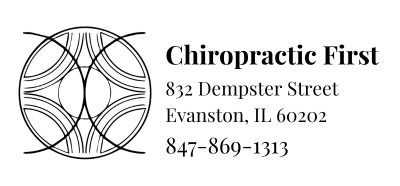
Exercises for Reopening Anxiety and Covid Fear
Exercises for Covid fear and anxiety from Chiropractic First on Vimeo.
We hold different emotions in our bodies in different ways. The way your body holds the tension of the anxiety you feel around reopening is going to be very different than the way your body holds the fear you have, or had, about Covid. Both of those will also be different than the way your body experienced the frustration you felt during lockdown!
Given our approach to looking at the body geometrically, we observe tension patterns within 4 primary planes: posterior (back body), anterior (front body), sagittal (side body or the relationship of back to front), and coronal (the relationship of the sagittal to the broader world around us).
POSTERIOR AND ANTERIOR TENSION
Tension held in the posterior system is related to physical stressors and traumas whereas tension held in the anterior system relates to emotional or chemical stressors. The fear many of us experienced during Covid would be stored as tension in the front body because fear (or frustration, anger, or any other feeling that’s arisen) holds emotional energy. And this is exactly what we have found with patients over the last year!
To release tension in the front body, open your body into flexion and extension ranges of motion (or cat/cow like movements) and side bending (any movement where you’re stretching the side ribcage, armpit, and side body).
SAGITTAL TENSION
Sagittal tension is tension between the front and back body. In other words, where there is discord between what you would like to do (anterior/emotional) and what you can physically achieve (posterior/physical), this sagittal squeezing or compressive tension presents in the body. A common recent example of sagittal tension would be wanting to do something, like see your family, but being unable to do so because of Covid restrictions. We have observed sagittal tension a LOT over the past year!
To aid in releasing sagittal tension, the breath is a great tool! Try breathing deep into the chest, belly, or any other area that feels compressed or squeezed. We can also help you access and release the tension you feel at your next visit.
CORONAL TENSION
The most complex type of tension patterns we observe are called Coronal patterns. They relate to the way we interact with the broader world around us. Coronal tension patterns have been presenting more over the past month since the world has been opening back up. We now have to come to grips not only with the many ways the past year has changed us, but how we will use the lessons learned as we re-engage with the world moving forward. One example of coronal tension is someone who wants to be an artist, but has a job as an accountant. Coronal tension presents each day when they go to work and do their accounting job.
Coronal tension may cause the chest to cave in or the head to jut forward. To release this type of tension, move your body in an arc-like motion, bringing motion to the areas that feel “stuck” or like they’re suspended in space.
Next time you’re in the office, feel free to ask which gentle movements will help support your individual body in opening up and processing the many stressors of the past year!
In the above video, Meggie explains these 3 distinct types of tension people are holding around Covid. She also offers some basic stretches to help address that tension.




No comments yet.